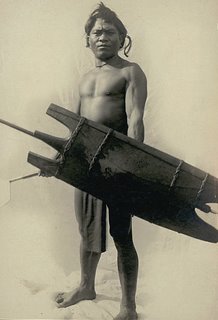Gloria Arroyo's RP Economic Wonder?
Gloria Arroyo is day dreaming in her Enchanted Kingdom.The recent hostage drama in Manila reflects the true state of the nation. Malacanang Palace wants s to paint a rosy picture of the Philippines. Gloria Arroyo has zero credibility. Nobody is buying her twisted economic gains.RP outpaced in growth by Vietnam, Bangladesh during GMA watch
By Alejandro Lichauco
| ANALYSIS |
 |
03/29/2007
In September last year, the World Bank issued a warning note calling attention that the Philippines “lags behind Asia anew.” (See story WB warns RP lags behind Asia anew, in business section of Tribune, Sept. 13, 2006). The story quotes a “top official” of the World Bank who “expressed amazement at how Vietnam, which once lagged behind the Philippines, had shown remarkable success” in reducing its poverty rate by half in the space of a decade.
Two years earlier, in 2004, a major broadsheet headlined that the IMF pointed to Bangladesh growing faster than the Philippines. (See Bangladesh to grow faster than RP-IMF, Today, April 23, 2004).
About a decade ago, mention Bangladesh and Vietnam and you conjure up images of poverty-stricken people. Today, that, apparently, isn’t so anymore. At the very least, you don’t hear of hunger in those two countries. In the Philippines, rising hunger is now official acknowledged fact. The poverty problem here has mutated into a problem of outright hunger — alarming enough to have prodded Malacañang into announcing that it was allocating P1 billion to finance an anti-hunger program.
The IMF and the World Bank aren’t alone in issuing these embarrassingly dire assessment of the Philippine situation during the watch of GMA. As far back as 2002, a United Nations agency, the UN Economic and Social Commission for Asia and the Pacific, noted the Philippines was the “laggard in Southeast Asia.” (See story UN sees RP as laggard in Southeast Asia, Malaya, April 27, 2002.)
Apparently, the comparative performance of the Philippines hasn’t improved since the UN assessment was made five years ago.
Truth is, the hunger situation here is much worse than what even the poll surveys show. In 2003, the Food and Nutrition Research Institute of the Department of Science and Technology issued a report saying eight out of 10 households in the Philippines are hungry.
There is no question that in spite of the stunning progress made by neighbors in the region, considerable poverty remains. But, except for the Philippines, hunger isn’t part of the economic vocabulary. Here, in contrast, under GMA’s watch, hunger has suddenly become officially acknowledged fact.
That’s something which GMA’s fans, both in and outside government, will have to explain. How come everyone, and that includes Malacañang, is now talking about hunger? One can understand all that talk about poverty. That has been the perennial problem since pre-war times. But never hunger, that is, until now.
Officially acknowledged hunger is the one shattering admission that there is something fundamentally wrong about the economics and the economic performance of this six-year-old government. Hunger was hardly, if ever, mentioned in previous regimes. But it is now, and talked about officially.
And so with hunger talk spreading around, where this isn’t so in neighboring countries, the IMF, the WB and the UN certainly have reason to pronounce that the Philippines has been, or is just about to be, overtaken by countries such as Vietnam and Bangladesh. And that did not happen in previous administrations.
What then could be the explanation? Why should the Philippines, to use the words of the UN, be the “laggard in Southeast Asia?”
The answer has something to do with industrialization.
This writer has a copy of the 2004 issue of the ADB’s Key Indicators and the comparative figures on the industrial growth rates of the Philippines, Bangladesh and Vietnam that tell it all.
Growth Rates of Industrial Sector in percent
2000 2001 2002 2003 Vietnam 10.1 10.4 9.5 10.3 Bangladesh 6.2 7.4 6.5 7.3 Philippines 4.9 0.9 3.7 3.0
Source: ADB Key Indicators 2004, Table 12
How then explain the figures — for the Philippines?
You see, GMA the economist as well as the economists who surround her — mostly if not exclusively from the UP and Ateneo School of Economics — don’t believe in industrialization, period.
The economists of Vietnam and Bangladesh, in contrast and judging by the performance of their industrial sectors, obviously do.
That’s the difference.
Perhaps that’s what GO’s senatorial slate should point out. That is, if it believes in industrialization. The question is, does the opposition? If it does, why doesn’t it present a legislative program focused on industrialization? Daily Tribune 03/29/2007
Related Links:
Behind GMA's Economic Hype, Filipinos' Lives Continue to WorsenArroyo’s Six-Year Record Shows Highest Debt, Lowest Cost In Social Services
Labels: Economics





 Deviant Art
Deviant Art
1 Comments:
true religion jeans, polo lacoste, vanessa bruno, hogan outlet, sac longchamp pas cher, michael kors uk, new balance pas cher, air max pas cher, north face, coach outlet, vans pas cher, coach outlet store online, oakley pas cher, longchamp, nike tn, louboutin, nike roshe run pas cher, ray ban sunglasses, coach purses, kate spade outlet, chanel handbags, true religion outlet, sac burberry, true religion outlet, michael kors, mulberry, nike blazer, true religion jeans, hollister, michael kors pas cher, timberland, coach factory outlet, air max, hollister, air jordan, polo ralph lauren, sac guess, ray ban pas cher, nike air force, kate spade handbags, converse pas cher, north face, nike free pas cher, sac hermes, lululemon outlet online
Post a Comment
<< Home